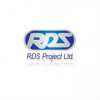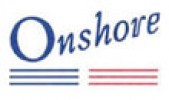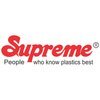QC Engineer
70+ QC Engineer Interview Questions and Answers

Asked in Oswal Infrastructure

Q. What is heat exchanger? What is pressure vessel? Function of he/pv? Mechanical properties with codes and standards? Material grade and difference? ASME codes and standards? NDT test? WPS pqr wpq? P no. F no. A...
read moreHeat exchanger and pressure vessel are mechanical equipment used in various industries for heat transfer and pressure containment.
Heat exchanger is a device used to transfer heat between two or more fluids of different temperatures.
Pressure vessel is a container designed to hold gases or liquids at a pressure substantially different from the ambient pressure.
The function of heat exchanger is to transfer heat from one fluid to another, while pressure vessel is used to store or...read more

Asked in Rds Project

Q. What are the MDD and OMC of WMM and GSB?
M.D.D. and O.M.C. are important parameters for W.M.M. and G.S.B.
M.D.D. stands for Maximum Dry Density, which is the maximum density that can be achieved for a given soil at a specific moisture content.
O.M.C. stands for Optimum Moisture Content, which is the moisture content at which the maximum dry density can be achieved.
W.M.M. stands for Wet Mix Macadam, which is a type of road construction material made by mixing aggregates, water, and a binding agent.
G.S.B. stands for Gra...read more
QC Engineer Interview Questions and Answers for Freshers

Asked in Rds Project

Q. What type of sand is generally used in construction work?
Different types of sand zones are used in construction work depending on their properties.
Coarse sand is used for concrete and masonry work.
Fine sand is used for plastering and finishing work.
Pit sand is used for filling and leveling.
River sand is used for construction of dams and bridges.
Sea sand should not be used in construction due to its high salt content.

Asked in Kalpataru Projects International

Q. What is the maximum Liquid Limit and Plasticity Index allowed in earthwork for embankment/subgrade soil?
Liquid limit should not exceed 40% and Plasticity Index should not exceed 20% for earth work in embankment/subgrade soil.
Liquid limit and Plasticity Index are important parameters to determine the suitability of soil for construction purposes.
Higher values of Liquid limit and Plasticity Index indicate that the soil is more susceptible to deformation and settlement.
For earth work in embankment/subgrade soil, the maximum allowable Liquid limit is 40% and Plasticity Index is 20%...read more

Asked in BIL Infratech

Q. Which IS code is followed for checking the lamination of a plate?
The IS code followed for checking lamination of plate is IS 2062:2011.
IS 2062:2011 is the Indian Standard code for hot-rolled medium and high tensile structural steel.
It specifies the requirements for steel plates used in general structural purposes.
The code includes guidelines for checking lamination defects in the plates.
Various non-destructive testing methods like ultrasonic testing, magnetic particle testing, etc., are used to check for lamination.
The code provides accept...read more

Asked in Parle Elizabeth Tools

Q. Are you knowledgeable about the Seven Quality Control (7QC) Tools and the Eight Disciplines (8D) Problem Solving Methodology?
The 7QC Tools and 8D methodology are essential frameworks for quality control and problem-solving in various industries.
7QC Tools: These include tools like Pareto Charts, Fishbone Diagrams, and Control Charts, which help identify and analyze quality issues.
Example of Pareto Chart: Used to identify the most common defects in a manufacturing process, focusing on the vital few causes.
Fishbone Diagram: Also known as Ishikawa or Cause-and-Effect Diagram, it helps in brainstorming ...read more
QC Engineer Jobs




Asked in L&T Energy Hydrocarbon

Q. Molybdenum is the difference in 304 and 316, 309 using in dissimilar job, Pwht purpose stress relieving, Asme sec 8, 9, 2,5 B31.3
Molybdenum's role in 304, 316, 309 dissimilar jobs, PWHT for stress relief, ASME Sec 8, 9, 2.5, B31.3
Molybdenum improves corrosion resistance in stainless steel
304 contains 8-10.5% nickel and 18-20% chromium, while 316 contains 10-14% nickel and 16-18% chromium
309 is used for dissimilar welding of stainless steel to carbon or low-alloy steel
PWHT is used to relieve residual stresses in welded components
ASME Sec 8, 9, 2.5, B31.3 are codes and standards for pressure vessels and ...read more

Asked in Kcc Buildcon

Q. initial and final setting testing of cement initalafter 30minfinal 600min under setting time
Initial and final setting time of cement is tested after 30 and 600 minutes respectively.
Initial setting time is the time taken by cement to harden enough to resist certain pressure.
Final setting time is the time taken by cement to harden completely and attain its full strength.
The standard initial setting time for ordinary Portland cement is 30 minutes and final setting time is 600 minutes.
The setting time can be affected by factors like temperature, water-cement ratio, and ...read more
Share interview questions and help millions of jobseekers 🌟


Asked in Deluxe Entertainment

Q. What are the various video standards used around the world?
Various video standards used around the world include NTSC, PAL, SECAM, and ATSC.
NTSC is used in North America, Japan, and parts of South America.
PAL is used in Europe, Australia, and parts of Asia and Africa.
SECAM is used in France, Russia, and parts of Africa and Asia.
ATSC is used in North America for digital television broadcasting.
Asked in Multi Teck Engineering Soliutions

Q. What is the least count of an analog micrometer, and how do you calculate it?
The least count of an analog micrometer is the smallest measurement that can be read on the scale.
The least count is determined by the number of divisions on the main scale and the number of divisions on the circular scale.
To calculate the least count, you multiply the smallest division on the main scale by the number of divisions on the circular scale.
For example, if the smallest division on the main scale is 0.01 mm and there are 50 divisions on the circular scale, the leas...read more

Asked in Shaily Engineering Plastics Ltd

Q. Least count of Vernier caliper, Micrometer.
The least count of a Vernier caliper and a micrometer is the smallest measurement that can be read on the scale.
The least count of a Vernier caliper is typically 0.02 mm or 0.001 inch.
The least count of a micrometer is typically 0.01 mm or 0.001 inch.
The least count is determined by the number of divisions on the main scale and the Vernier scale.
For example, if the main scale has 10 divisions and the Vernier scale has 9 divisions, the least count would be 0.1 mm divided by 9,...read more
Asked in Vinod Kumar Jain & Co.

Q. How do you test materials such as concrete, cement, and soil?
Testing for materials like concrete, cement, and soil involves various methods and techniques.
For concrete, tests like compressive strength, slump test, and air content test can be conducted.
For cement, tests like fineness, soundness, and setting time can be conducted.
For soil, tests like sieve analysis, moisture content, and compaction test can be conducted.
Testing should be done according to relevant standards and specifications.
Proper sampling and preparation of specimens ...read more

Asked in Deluxe Entertainment

Q. What are the Various Audio & video formats?
Various audio & video formats include MP3, WAV, AVI, MP4, FLV, WMV, MOV, and more.
Audio formats: MP3, WAV, AAC, WMA, FLAC, OGG
Video formats: AVI, MP4, FLV, WMV, MOV, MKV
Container formats: MPEG-4, QuickTime, Matroska
Lossless formats: FLAC, ALAC, WAV
Streaming formats: HLS, MPEG-DASH
Codecs: H.264, H.265, VP9

Asked in Kcc Buildcon

Q. What are the initial and final setting times of cement?
Initial and final setting of cement are the stages when the cement changes from a plastic state to a solid state.
Initial setting time is the time taken by the cement to lose its plasticity and become rigid enough to withstand some pressure.
Final setting time is the time taken by the cement to completely lose its plasticity and become completely rigid.
The initial setting time of cement should not be less than 30 minutes and the final setting time should not be more than 10 hou...read more

Asked in BIL Infratech

Q. Which IS code is followed for testing fasteners?
The IS code followed for testing of fasteners is IS 1608:2005.
IS 1608:2005 is the Indian Standard code for testing of fasteners.
It provides guidelines for testing the mechanical properties of fasteners such as bolts, screws, nuts, and washers.
The code covers various tests including tensile strength, proof load, hardness, torque, and fatigue strength.
These tests ensure that fasteners meet the required quality standards and can withstand the intended loads and conditions.
Compli...read more

Asked in Onshore Construction

Q. What is the acceptance tolerance for pump alignment?
The acceptance tolerance of pump alignment refers to the allowable deviation from the ideal alignment.
Acceptance tolerance is determined by industry standards and specifications.
It varies depending on the type of pump and its application.
Tolerance can be specified in terms of angular misalignment, parallel offset, and axial displacement.
For example, ANSI/HI 9.6.4 standard specifies a maximum angular misalignment tolerance of 0.1 degrees for centrifugal pumps.
Tolerance limits ...read more

Asked in L&T Energy Hydrocarbon

Q. Different between ss304 , 316, 309 material , Pwht purpose, regards codes
Explanation of differences between ss304, 316, 309 materials and the purpose of PWHT in regards to codes.
SS304 is a basic stainless steel with good corrosion resistance, SS316 has higher corrosion resistance and is often used in marine environments, SS309 is used for high-temperature applications
PWHT (Post Weld Heat Treatment) is used to relieve residual stresses and improve material properties after welding
Codes such as ASME Boiler and Pressure Vessel Code require specific P...read more
Asked in Wavebit Infratech

Q. What is the process of electrode rod backing?
Electro rod backing is a process used in welding to provide support and stability to the electrode rod during the welding process.
Electro rod backing is used to prevent the electrode rod from bending or sagging during welding.
It involves attaching a backing material to the electrode rod to provide support.
The backing material can be made of copper, aluminum, or other heat-resistant materials.
The backing material is typically shaped to match the contour of the joint being weld...read more
Asked in Maharashtra Electro-mechanical Works

Q. Invention of motor and how to work motor and etc
The invention of the motor revolutionized the industrial world by providing a reliable source of mechanical power.
The first electric motor was invented by Michael Faraday in 1821.
Motors work by converting electrical energy into mechanical energy through the interaction of magnetic fields.
There are various types of motors such as DC motors, AC motors, and stepper motors.
Motors are used in a wide range of applications including industrial machinery, household appliances, and el...read more
Asked in PSV PRECAST

Q. What is the acceptable tolerance for wall construction during erection?
Acceptable tolerances for wall construction ensure structural integrity and aesthetic quality during erection.
Plumb Tolerance: Walls should be within 1/4 inch per 10 feet of height to ensure vertical alignment.
Level Tolerance: Horizontal surfaces must be level within 1/8 inch over 10 feet to maintain proper alignment.
Flatness Tolerance: Wall surfaces should not deviate more than 1/4 inch over 10 feet to avoid visual defects.
Alignment Tolerance: Walls should align with adjacen...read more
Asked in PSV PRECAST

Q. What is the lifting strength of M50 grade concrete?
M50 grade concrete has a compressive strength of 50 MPa, suitable for heavy structural applications and load-bearing elements.
Compressive Strength: M50 concrete has a characteristic compressive strength of 50 MPa (megapascals) when tested at 28 days.
Applications: It is commonly used in high-strength structures like bridges, high-rise buildings, and industrial floors.
Mix Design: M50 is a high-performance concrete mix, typically made with a lower water-cement ratio and high-qua...read more
Asked in Multi Teck Engineering Soliutions

Q. What is Perpendicularity,How do you measure it?
Perpendicularity is the condition of being perpendicular or at right angles to each other. It is measured using tools like squares, protractors, or coordinate measuring machines.
Perpendicularity is the relationship between two lines, planes, or surfaces that meet at a 90-degree angle.
It is measured by comparing the angle between the two surfaces using tools like squares, protractors, or coordinate measuring machines.
Perpendicularity is important in engineering and manufacturi...read more
Asked in Multi Teck Engineering Soliutions

Q. What is the working principle of a Vernier Caliper?
Vernier Caliper works on the principle of measuring the distance between two opposite sides of an object.
Consists of a main scale and a sliding Vernier scale for precise measurements
The Vernier scale has smaller divisions that allow for more accurate readings
The final measurement is a combination of the main scale reading and the Vernier scale reading
Used for measuring internal and external dimensions, as well as depth and steps
Example: If the main scale reads 3 cm and the Ve...read more

Asked in Supreme Industries

Q. What are the fundamentals of the rotomoulding process?
Rotomoulding is a manufacturing process where a hollow object is produced by heating and rotating a plastic material in a mould.
Plastic material is heated in a mould while being rotated on two perpendicular axes
The mould is cooled to solidify the plastic material into the desired shape
The process is used to create large, hollow objects such as tanks, containers, and playground equipment

Asked in Dipesh Engineering Works

Q. How would you define hardness and toughness?
Hardness is the ability of a material to resist indentation, while toughness is the ability to absorb energy without fracturing.
Hardness is measured by the Mohs scale for minerals and the Brinell or Rockwell scale for metals.
Toughness is measured by the Charpy or Izod impact test.
A diamond is a very hard material, but not tough as it can shatter easily.
Rubber is not hard, but it is tough as it can absorb a lot of energy without breaking.
Asked in Wavebit Infratech

Q. What checks are performed while doing Dye Penetrant Testing (DPT)?
DPT stands for Dye Penetrant Testing. It is used to detect surface defects in non-porous materials.
Ensure the surface is clean and dry before applying the dye penetrant.
Apply the dye penetrant evenly and allow it to dwell for the specified time.
Remove excess penetrant and apply developer to draw out any defects.
Inspect the surface under appropriate lighting conditions for indications of defects.
Evaluate the indications based on the acceptance criteria.

Asked in BIL Infratech

Q. What is carbon equivalent (CE)?
Carbon equivalent (CE) is a measure used in metallurgy to assess the weldability and hardenability of steel.
Carbon equivalent is calculated based on the carbon content and other alloying elements in the steel.
It helps determine the potential for cracking and the heat treatment required for the steel.
A higher carbon equivalent indicates a higher risk of cracking during welding.
CE values are commonly used in the oil and gas industry to select appropriate materials for pipelines...read more

Asked in Deluxe Entertainment

Q. What are the various audio codecs?
Audio codecs are software or hardware that compress and decompress digital audio data for transmission or storage.
Some popular audio codecs include MP3, AAC, WMA, FLAC, and Ogg Vorbis.
Lossy codecs like MP3 and AAC discard some audio data to achieve smaller file sizes.
Lossless codecs like FLAC and ALAC retain all audio data but result in larger file sizes.
Some codecs are proprietary, like WMA and Apple's ALAC, while others are open source, like Ogg Vorbis and Opus.
Different co...read more
Asked in Wavebit Infratech

Q. What methods are used to create a WPS?
Methods used to create WPS
Welding Procedure Specification (WPS) can be created using various methods.
One common method is to follow the guidelines provided by welding codes and standards such as AWS D1.1 or ASME Section IX.
Another method is to conduct welding procedure qualification tests to determine the parameters for the WPS.
WPS can also be created by referencing existing qualified procedures and making necessary modifications.
It is important to consider factors like base ...read more

Asked in Parle Elizabeth Tools

Q. Are you familiar with Quality Control instruments?
Quality Control instruments are essential tools used to ensure products meet specified standards and regulations.
Calipers: Used for measuring the distance between two opposite sides of an object, ensuring precise dimensions.
Micrometers: Provide accurate measurements of small objects, often used in mechanical engineering for tight tolerances.
Gauge Blocks: Precision blocks used to calibrate measuring equipment and ensure accuracy in measurements.
Spectrophotometers: Measure the ...read more
Interview Experiences of Popular Companies








Reviews
Interviews
Salaries
Users

















